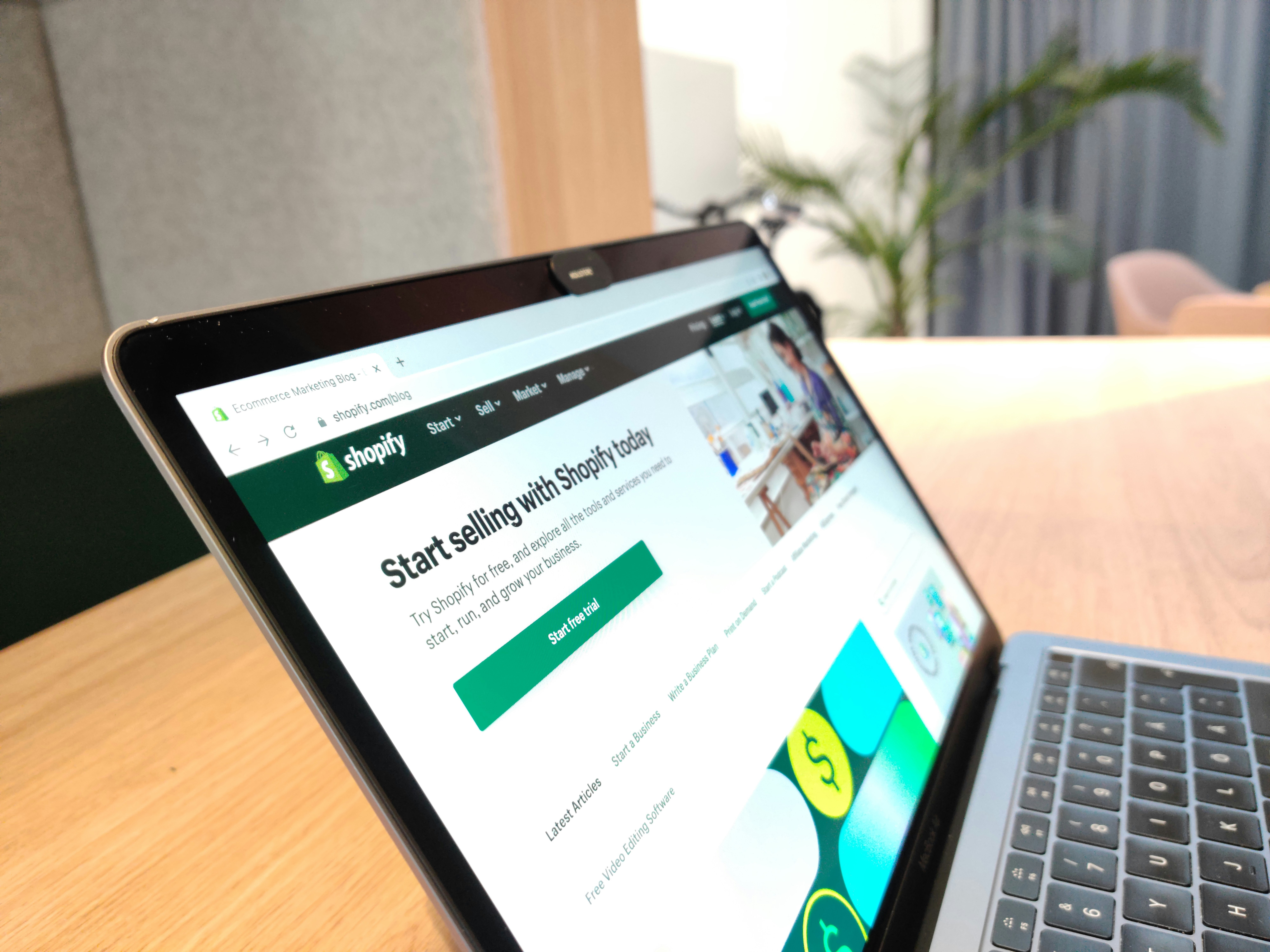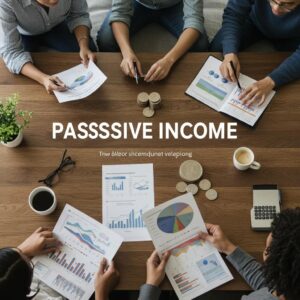How to Make Money Without a Job: 7 Easy Alternatives to Earn Income from Home
Making money without a traditional 9-to-5 job is a realistic path to financial independence and flexible lifestyle design. Whether you seek supplemental cash flow or a full replacement for salaried work, these seven alternatives—from passive investments to niche online businesses—offer clear strategies you can start now. This guide reveals each method’s definition, mechanism, and specific benefit, then explains how to begin, compares advantages and drawbacks, and shows how combining approaches maximizes earning potential. You’ll discover:
- Top passive income ideas and how they fund autonomy
- Proven steps to succeed as a freelancer online
- Gig economy opportunities and emerging trends for 2025
- Best practices for creating and selling digital products
- Easy surveys and microtasks side hustles
- Asset renting strategies that monetize unused resources
- Launching a niche online business with low startup costs
Along the way, we’ll address taxes, budgeting for irregular earnings, and protections available to non-traditional earners, so you can build a sustainable income model without a formal employer.
What Are the Best Passive Income Ideas to Make Money Without a Job?
Passive income delivers earnings with minimal ongoing effort once the initial setup is complete, enabling you to earn money without a job while you sleep or focus on new ventures. Popular streams include dividend-paying stocks, rental properties, high-yield savings, and digital products like e-books. Each option leverages upfront investment—financial or creative—to generate recurring revenue, supporting long-term wealth accumulation. Understanding these methods builds a foundation for combining streams and achieving economic autonomy.
What Is Passive Income and How Does It Work?
Passive income refers to revenue that continues after initial work or capital outlay, requiring little day-to-day management once established. For instance, dividend stocks pay shareholders a share of corporate profits, while rental properties collect monthly rent from tenants. Digital assets such as online courses or e-book royalties earn each time someone purchases them. The underlying mechanism relies on either financial capital deployed in income-producing instruments or creative assets distributed globally, making passive income a cornerstone for diversifying earnings without a traditional job. This concept naturally leads into practical steps for getting started with investments and digital assets.
How Can You Start Earning Passive Income with Investments and Digital Assets?
To launch a passive income stream:
- Research and select dividend-paying stocks with a history of stable yields and reinvest dividends for compounding growth.
- Explore rental income by listing a spare room or property on hosting platforms and managing bookings efficiently.
- Create digital products—an e-book, online course, or printable templates—using familiar tools, then publish through established marketplaces.
- Automate marketing and delivery with scheduled email sequences and platform integrations.
- Reinvest earnings to expand portfolios or develop new products for sustained revenue growth.
Following these steps establishes a scalable framework for passive earnings, preparing you to weigh each stream’s strengths and trade-offs.
What Are the Pros and Cons of Passive Income Streams?
Before committing resources, compare key attributes of popular passive income types:
Each income stream offers unique benefits that reinforce diversified wealth building. Understanding these trade-offs guides your choice of which streams to prioritize and combine for broader financial independence.
How Does Passive Income Contribute to Financial Independence?
Passive income accelerates financial independence by reducing reliance on active labor and enabling you to redirect time toward new ventures, leisure, or personal growth. As streams compound—through reinvestment or additional product launches—the cumulative cash flow can surpass living expenses, funding lifestyle goals without a traditional job. This progression integrates directly with wealth-building strategies, illustrating how passive earnings underpin economic autonomy and greater control over time.
How Can You Find and Succeed in Freelance Jobs Online?

Freelancing means offering skills on a contract basis rather than through continuous employment, making it a powerful alternative to a job. High-demand roles include writing, graphic design, programming, virtual assistance, and online tutoring. By positioning yourself on specialized platforms and curating a professional portfolio, you attract clients seeking project-based support. Embracing freelancing maximizes flexibility and earning potential without long-term employment commitments.
What Is Freelancing and Which Jobs Are Most In-Demand?
Freelancing is self-employment where you deliver discrete services to clients under short-term agreements. Common in-demand roles are:
- Content creators developing articles, blogs, and marketing copy
- Graphic designers producing logos, brand assets, and UX/UI elements
- Programmers coding websites, mobile apps, and automation scripts
- Virtual assistants handling administrative tasks, calendar management, and customer communications
- Online tutors teaching academic subjects or specialized skills through video sessions
Each category leverages your expertise to earn fees per project or hourly rates, reinforcing that freelancing is a form of side hustle adaptable to varied skill sets.
How Do You Get Started with Freelance Platforms Like Upwork and Fiverr?
To launch a freelance career:
- Create a detailed profile highlighting past work and relevant skills.
- Build a portfolio with sample projects or personal case studies.
- Craft targeted proposals addressing client needs and demonstrating solution-oriented thinking.
- Set competitive rates based on industry benchmarks and gradually raise pricing as you gain positive reviews.
- Cultivate client relationships through clear communication and on-time delivery.
By following these steps, you establish credibility, streamline your onboarding process, and open ongoing opportunities to deepen your income without a full-time job.
What Are the Benefits and Challenges of Freelancing?
Freelancing offers notable flexibility, allowing you to choose projects and set schedules aligned with personal priorities. Income variability can be mitigated through a mix of retainer agreements and one-off engagements, while self-management fosters entrepreneurial skills. Conversely, inconsistent cash flow, lack of traditional benefits, and the need to handle marketing and accounting are challenges that require proactive planning and resilience.
How Can Freelancing Be Combined with Selling Digital Products?
Many freelancers augment service fees by creating digital assets—templates, design resource packs, or niche e-books—that showcase their expertise. For example, a graphic designer might sell print-ready brand kits while offering custom branding services. This hybrid approach diversifies revenue, leverages existing client audiences, and strengthens personal brand authority across multiple earning channels.
What Gig Economy Opportunities Can Help You Make Money Without a Job?
The gig economy involves on-demand, short-term work facilitated by digital platforms. Predominant opportunities include rideshare driving, food delivery, pet sitting, or performing tasks. These roles require minimal prerequisites, providing immediate access to income without formal hiring. As the gig market grows, new niches and dedicated apps continue expanding options for flexible earnings in 2025.
The gig economy, characterized by short-term employment facilitated by online platforms, is rapidly transforming the labor market globally.
What Types of Gig Jobs Are Available in 2025?
Popular gig roles today encompass:
- Delivery driver for groceries, meals, and parcels
- Rideshare driver offering point-to-point transportation
- Pet care including dog walking and pet sitting
- Task running such as furniture assembly or errand completion
- Household services like cleaning and yard work
Each gig type allows immediate start with basic background checks, enabling you to monetize skills or assets on demand and build incremental income without conventional employment.
How Do Gig Economy Apps Work and How Can You Get Started?
Gig platforms match workers with customers through straightforward mobile apps. To begin:
- Download the app, register with personal and vehicle details if required.
- Complete any necessary background or equipment checks mandated by the platform.
- Turn on availability and accept nearby requests based on proximity and earnings potential.
- Use in-app navigation and communication tools for efficient execution.
- Monitor ratings and reviews to maintain high service quality and unlock bonuses.
This setup empowers you to work when convenient, making gig roles a flexible supplement or replacement for job income.
What Are the Advantages and Drawbacks of Gig Economy Work?
Gig work delivers immediate earnings with schedule freedom and minimal barrier to entry. Performance-based bonuses and surge pricing further enhance income potential during peak demand. However, lack of benefits, unpredictable hours, and wear-and-tear on assets introduce challenges that require budgeting and maintenance strategies to ensure long-term viability.
How Is the Gig Economy Growing and What Trends Should You Know?
The gig workforce has steadily expanded, with on-demand platforms accounting for over one-third of the U.S. labor market and projected growth fueled by remote service delivery and location-based apps (bloggingwizard.com). Emerging trends include specialized micro-task platforms, integration of AI for task matching, and subscription-based gig services that offer recurring assignments—underscoring the gig economy’s evolving capacity to generate income without a traditional job.
The digital economy has significantly reshaped the labor market, leading to a notable increase in freelancing and temporary jobs.
How Can You Make Money Selling Digital Products Online?

Digital products are non-physical goods you create once and sell repeatedly, unlocking scalable passive income without inventory management. Top sellers include e-books, online courses, printable templates, stock photos, and digital art. By leveraging AI-assisted design and established marketplaces, you can reach global audiences, transform expertise into revenue, and maintain creative control over pricing and distribution.
What Are Digital Products and Which Ones Sell Best?
Digital products encompass any downloadable or streamable content you craft:
- E-books guiding readers through niche expertise
- Online courses delivering structured learning experiences
- Printable planners and templates for productivity and design
- Stock photos or graphics for websites and marketing
- Low-content books such as journals and workbooks
Products that solve clear problems or impart specialized skills consistently top sales charts, as customers seek immediate, accessible solutions.
How Do You Create and Market Digital Products Using AI Tools?
AI-powered platforms simplify creation: use design templates in visual tools to craft professional layouts, employ AI copy-generators for draft text, and record course modules via automated editing suites. For marketing, leverage automated email funnels, social media scheduling, and affiliate partnerships to drive traffic. By combining human expertise with AI efficiency, you accelerate product development and broaden reach without sacrificing quality.
What Platforms Are Best for Selling Digital Products?
Leading marketplaces facilitate sales and distribution without building a standalone storefront:
- A crafting marketplace known for printables and design assets
- A simple checkout platform with pay-what-you-want options
- A self-publishing service for e-books and low-content titles
Each platform handles payment processing and file delivery, enabling you to focus on creation and promotion rather than technical integration.
What Are the Benefits and Challenges of Selling Digital Products?
Digital products offer high profit margins, minimal ongoing costs, and global scalability. Once created, they continue generating revenue without further labor. Challenges include upfront development effort, market saturation in popular niches, and the need for continuous marketing to sustain visibility. Balancing creative quality with promotional consistency ensures long-term success.
How Can Online Surveys and Microtasks Provide Easy Side Hustles?
Participating in online surveys and microtask platforms delivers straightforward, on-demand earnings by completing brief assignments—from product feedback to small digital tasks. These activities require no specialized skills and allow you to monetize spare moments, making them among the easiest ways to earn money without a job.
What Are Legitimate Online Survey Sites and Microtask Platforms?
Reputable survey and microtask platforms partner with brands and researchers to collect consumer insights and crowdsource simple tasks:
- Surveys assessing product preferences and market trends
- Microtasks like website testing, data categorization, or short transcription jobs
- Focus groups and paid user-experience studies conducted remotely
Each platform screens participants to ensure data quality, and consistent performance unlocks higher-paying opportunities over time.
How Much Can You Earn from Online Surveys and Microtasks?
Earnings vary by task complexity and platform rates, typically ranging from a few cents to several dollars per assignment. On average, dedicated participants can earn between $50 and $200 monthly by treating surveys and microtasks as a supplementary side hustle. Consistent engagement and focusing on higher-paying tasks yield the best income outcomes.
What Are the Pros and Cons of Participating in Online Surveys?
Online surveys offer complete flexibility and require no specialized skills, making them accessible to virtually anyone. The low barrier to entry and immediate task availability deliver quick micro-earnings. However, low pay per task and potential for screen-outs (when you don’t qualify) can limit overall income. Strategic platform selection and task prioritization help maximize returns for your time.
How Can Renting Out Assets or Space Generate Income Without a Job?
Asset monetization turns underused resources—homes, vehicles, parking spots, or equipment—into revenue streams. By listing assets on hosting platforms, you leverage idle capacity to earn money without a traditional job. Asset rentals require upfront setup and periodic maintenance but can deliver reliable, location-based cash flow that supplements or replaces active work.
What Types of Assets Can You Rent Out for Extra Income?
Popular rental assets include:
- Residential space such as a guest room or entire dwelling
- Vehicles for short-term car sharing
- Parking spaces in high-demand areas
- Specialized equipment like cameras, tools, or event gear
Each asset category taps into distinct market needs—accommodations for travelers, reliable transport options, and convenient workspace support—unlocking diversified earnings without active employment.
How Do You Get Started with Platforms Like Airbnb and Turo?
To monetize assets:
- Prepare your asset for listing by ensuring safety, cleanliness, and clear usage instructions.
- Create an appealing profile with high-quality photos and detailed descriptions.
- Set competitive pricing based on local demand and seasonal trends.
- Automate booking management and communication with guests or renters.
- Maintain asset quality through regular inspections and prompt issue resolution.
These steps establish a smooth rental experience, driving repeat bookings and positive reviews that fuel ongoing income.
What Are the Risks and Rewards of Renting Out Your Assets?
Renting assets yields substantial revenue potential—often surpassing passive investments in yield—but introduces liability risks and maintenance costs. Insurance coverage and clear rental agreements mitigate risk, while diligent upkeep preserves asset value and guest satisfaction. Balancing earnings forecasts with contingency planning secures lasting benefits from asset monetization.
How Can You Start a Niche Online Business to Make Money from Home?
A niche online business focuses on a specialized market segment—such as eco-friendly print-on-demand products, targeted coaching services, or hobby-based communities—and monetizes expertise or curation. Low startup costs and global reach make niche ventures a compelling way to earn money without a job, as you deliver unique value to an engaged audience.
What Are Profitable Niche Online Business Ideas for Beginners?
High-potential niche models include:
- Dropshipping of curated products in emerging categories
- Print-on-demand custom apparel or home decor items
- Content-driven blogging with affiliate monetization
- Specialized YouTube channels offering tutorials and digital sponsorships
- Micro-consulting or coaching in narrow skill areas
Selecting a niche aligned with personal passion and market demand ensures sustainable motivation and clearer paths to profitability.
How Do You Launch and Grow a Niche Online Business?
To build your niche enterprise:
- Conduct market research to validate demand and pricing tolerance.
- Develop a concise business plan outlining target audience, product offerings, and marketing channels.
- Establish an online presence via a simple website, social media outlets, and community forums.
- Implement content marketing and paid advertising to attract initial customers.
- Gather feedback and iterate product or service features for continuous improvement.
This structured approach accelerates momentum, enabling you to refine offerings and amplify revenue without a full-time employer.
What Are the Common Challenges and How Can You Overcome Them?
Starting a niche business entails competition, time management demands, and initial customer acquisition hurdles. Overcome these by carving a unique positioning—through specialized expertise or brand personality—using time-blocking techniques to balance tasks, and leveraging partnerships for co-marketing. Consistent experimentation and data-driven adjustments foster resilience and growth.
How Can Combining Multiple Alternatives Maximize Your Income?
Diversification across passive income, freelancing, gig work, digital products, surveys, asset rentals, and niche businesses smooths out fluctuations in any single stream. For example, you might use gig earnings to fund dividend investments while selling digital templates to clients you met through freelance projects. A hybrid model enhances stability, multiplies touchpoints with different customer segments, and accelerates progress toward financial independence.
What Financial Considerations Should You Know When Making Money Without a Job?
Earning income outside traditional employment requires proactive financial management, especially regarding taxes, budgeting, and benefits. Understanding these considerations ensures compliance, preserves cash flow, and secures protections typical employees receive.
How Do Taxes Work for Freelancers, Gig Workers, and Passive Income Earners?
Self-employed individuals must calculate and remit estimated taxes quarterly, covering both income and self-employment tax contributions. Passive income sources like dividends and rental earnings often involve separate reporting forms. Tracking deductible expenses—home office costs, equipment purchases, and service fees—reduces taxable income. An organized record-keeping system simplifies compliance and avoids unexpected liabilities.
How Should You Budget and Save with Non-Traditional Income?
Irregular earnings demand flexible budgeting: allocate a percentage of each payment to essentials, savings, taxes, and reinvestment. Establish an emergency fund covering at least three months of living expenses to cushion lean periods. Automating transfers into high-yield savings or retirement accounts maintains discipline. This disciplined approach transforms variable cash flows into reliable financial stability.
What Benefits and Protections Are Available for Non-Job Income Earners?
Self-employed and gig economy workers can access health insurance through marketplaces or professional associations, and contribute to individual retirement accounts or SEP-IRAs for tax-advantaged savings. Disability insurance, liability coverage, and business liability policies fill gaps left by employer-provided benefits. Strategically selecting these protections preserves personal and financial well-being as you navigate independent earning.
What Are the Most Common Questions About Making Money Without a Job?
People exploring non-traditional income paths often wonder which methods suit beginners, whether a full-time replacement is realistic, how to generate quick cash, and how AI can accelerate earnings. Addressing these questions clarifies expectations and actionable next steps for any reader ready to start earning without a formal employer.
How Can I Start Making Money from Home with No Experience?
Begin by leveraging easy-entry platforms: complete online surveys, sign up for microtasks, or offer basic virtual assistance services. Parallelly, explore freelancing marketplace profiles with free portfolio samples to attract small gigs. As you gain confidence, reinvest earnings in skill development and launch simple digital products or gig work opportunities, progressively building expertise and diversified income.
Is It Possible to Make a Full-Time Income Without a Traditional Job?
Yes, many earners replace salaried positions by combining multiple streams—such as steady freelancing retainers, passive royalty payouts, and rental income—to cover living expenses. Strategic diversification, disciplined financial management, and continuous skill upgrades enable sustained, full-time earnings independent of conventional employment.
What Are the Easiest Ways to Make Money Online Quickly?
For immediate returns, focus on tasks requiring minimal training: online surveys, website testing assignments, and data entry microtasks. These yield small but rapid payouts. Simultaneously, offer entry-level freelancing services—social media scheduling or proofreading—for quicker project approvals and higher rates, bridging the gap to more substantial earning methods.
How Can I Use AI Tools to Boost My Income Without a Job?
AI accelerates content creation, design, and research by automating drafting and layout tasks. Use AI-powered writing assistants for e-book outlines, employ design generators for digital printable sets, and leverage automated analytics tools to refine freelancing proposals. By integrating AI into workflows, you reduce development time, scale offerings faster, and enhance professionalism—boosting income potential across multiple earning channels.
Building an integrated income ecosystem—mixing passive investments, gig work, digital products, and niche entrepreneurship—delivers both stability and growth without a traditional job, empowering you to achieve financial independence on your own terms.




